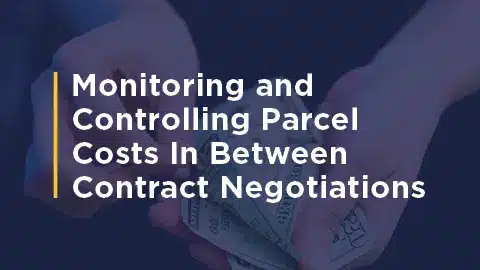UPS has revised its Ground Saver service eligibility as of June 2, 2025, implementing new dimensional and weight thresholds that could disrupt how many shippers approach low-cost, lightweight parcel delivery. If your business relies on Ground Saver to control last-mile costs, these changes may affect both your packaging standards and your carrier contract performance.
What’s Changed for UPS Ground Saver
To qualify for Ground Saver, packages must now meet all the following requirements:
- Minimum dimensions
- Height: 4 inches
- Length: 6 inches
- Width: 0.75 inches
- Maximum dimensions
- No single dimension over 60 inches
- Length plus girth combined cannot exceed 130 inches
- Weight limits
- Maximum: 70 pounds
- Packages under 1 pound must be under 864 cubic inches
To calculate cubic inches: Length × Width × Height (use the longest side as length)
In addition to these physical restrictions, packages must comply with the permissible commodity rules listed in the UPS Tariff Terms and Conditions.
Why It Matters
Ground Saver is a contracted service, meaning eligibility and pricing are determined at the customer level. Some high-volume shippers have negotiated rates below one pound, but not all businesses will have access to the same discounts or flexibility. This points to a broader UPS pricing strategy aimed at protecting margin on lightweight, high-volume shipments.
Shippers who fail to adjust to these new guidelines risk classification errors, unexpected surcharges or service denials. That can increase parcel spend and disrupt customer expectations, especially for e-commerce operations that rely on Ground Saver for cost-effective residential delivery.
Rethink Your Parcel Shipping Strategy
These changes are part of a larger trend. Carriers like UPS are constantly evolving their service terms to align with internal profitability goals, shifting more cost management responsibility to the shipper. Adapting to these shifts means looking beyond simple rate comparisons and developing a parcel strategy that factors in packaging, service levels and contract flexibility.
At Transportation Insight, we help shippers do just that. Our Parcel Spend Management services uncover hidden fees and identify optimization opportunities, while our Parcel Contract Optimization experts help you secure more favorable terms and avoid costly surprises.
Need help navigating the impact of these Ground Saver changes?
Talk to an expert to learn how we help you respond to shifting carrier requirements, minimize cost and maintain service performance.








